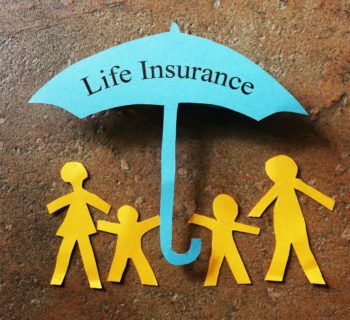 Losing a loved one can be one of the most challenging things for a family to face. Unfortunately, many families are thrust into worrying about the financial hardships that come from their loss before they even have a chance to mourn. From funeral costs and paying down debt, to replacing income and educating children, the financial pressures can be overwhelming. Yet, according to the financial industry research group LIMRA, 30 percent of U.S households have no life insurance and 48 percent have gaps in the amount of their coverage. In fact, only 25 percent of widows and widowers whose spouses died between the ages of 30 and 55 felt that there were adequate insurance benefits in place.
Losing a loved one can be one of the most challenging things for a family to face. Unfortunately, many families are thrust into worrying about the financial hardships that come from their loss before they even have a chance to mourn. From funeral costs and paying down debt, to replacing income and educating children, the financial pressures can be overwhelming. Yet, according to the financial industry research group LIMRA, 30 percent of U.S households have no life insurance and 48 percent have gaps in the amount of their coverage. In fact, only 25 percent of widows and widowers whose spouses died between the ages of 30 and 55 felt that there were adequate insurance benefits in place.
Are you underinsured?
Inadequate financial resources can lead to significant changes in lifestyle including the need for downsizing a home, taking a second job or the postponement of retirement for the surviving spouse. Bottom line: If you have others who rely on you and your income to meet their needs, life insurance is a must and securing coverage is critical to maintaining the financial security for loved ones. The question then becomes, how much coverage is necessary and what type is most appropriate?
Determining how much insurance is needed can be difficult. Start by asking yourself to what extent you would like your family to maintain their standard of living. Do you want them to remain in their home, pay off liabilities, have sufficient funds for education goals and also be able to retire one day?
 First, consider conducting a needs analysis and begin with immediate expenses your family may have including funeral costs, uncovered medical costs, final estate settlement costs and taxes. Next, total up all outstanding liabilities including mortgages, auto loans, student loans and credit cards. While your family may choose not to pay off a low interest mortgage, determining the lump sum that may be needed to ensure your heirs are not saddled with debt is critical. Next, consider the costs associated with covering existing living expenses and future financial goals like retirement and education funding to determine how much income must be generated from insurance proceeds. Consider completing a life insurance calculator at www.lifehappens.org for assistance in this process. Once you determine the amount of insurance that is necessary, then you must determine what type of policy is most appropriate.
First, consider conducting a needs analysis and begin with immediate expenses your family may have including funeral costs, uncovered medical costs, final estate settlement costs and taxes. Next, total up all outstanding liabilities including mortgages, auto loans, student loans and credit cards. While your family may choose not to pay off a low interest mortgage, determining the lump sum that may be needed to ensure your heirs are not saddled with debt is critical. Next, consider the costs associated with covering existing living expenses and future financial goals like retirement and education funding to determine how much income must be generated from insurance proceeds. Consider completing a life insurance calculator at www.lifehappens.org for assistance in this process. Once you determine the amount of insurance that is necessary, then you must determine what type of policy is most appropriate.
What type of insurance is best for you?
The first place people often look for insurance is their employer. While many workers find they have group life benefits, it is important to understand the limitations in the amount of coverage available. In addition, many Americans will change employers frequently, which could result in changes to the availability of group insurance. However, because group benefits often do not require underwriting, they may be a good fit for those with health issues or as supplemental insurance plan.
Term insurance is by far the simplest and most affordable type of insurance. Coverage is purchased for a specified amount and “term” of one to 30 years, depending on your needs. While the cost associated with term is initially low, maintaining coverage after your initial term expires can be expensive. Term is generally a good fit for those who have a temporary insurance need that will diminish as they age, such as providing for a young family, paying off a mortgage or having funds for retirement.
 For those looking for coverage that may last for their lifetime with the option to build cash value, policies like universal life or whole life may provide a possible solution. The permanent nature of these policies also makes them an effective tool for estate planning purposes to offset tax liability. However, they may be too expensive to rely on for your entire coverage needs.
For those looking for coverage that may last for their lifetime with the option to build cash value, policies like universal life or whole life may provide a possible solution. The permanent nature of these policies also makes them an effective tool for estate planning purposes to offset tax liability. However, they may be too expensive to rely on for your entire coverage needs.
Why so expensive? A portion of your premium payment is set aside in an attempt to build cash value as an investment. While this may seem attractive, the investment component may perform better or worse than other alternatives. For this reason, financial professionals may suggest “buying term and investing the difference.” In other words, consider purchasing less expensive term insurance and invest the money you would have spent on permanent insurance to build your own investment portfolio for your needs after the term expires. Consider visiting www.lifehappens.org for a complete list of insurance alternatives and the pros and cons of each.
Dealing with the loss of a loved one is difficult enough without having to worry about financial matters. Determining the optimal type and amount of insurance for eliminating this worry can be complex. Since everyone’s situation is unique, consider speaking to your tax and financial adviser to determine the best fit for you.
Kurt J. Rossi, MBA, CFP®, AIF® is a CERTIFIED FINANCIAL PLANNER & Wealth Advisor. He can be reached for questions at 732-280-7550, kurt.rossi@Independentwm.com, www.bringyourfinancestolife.com & www.Independentwm.com. LPL Financial Member FINRA/SIPC.








